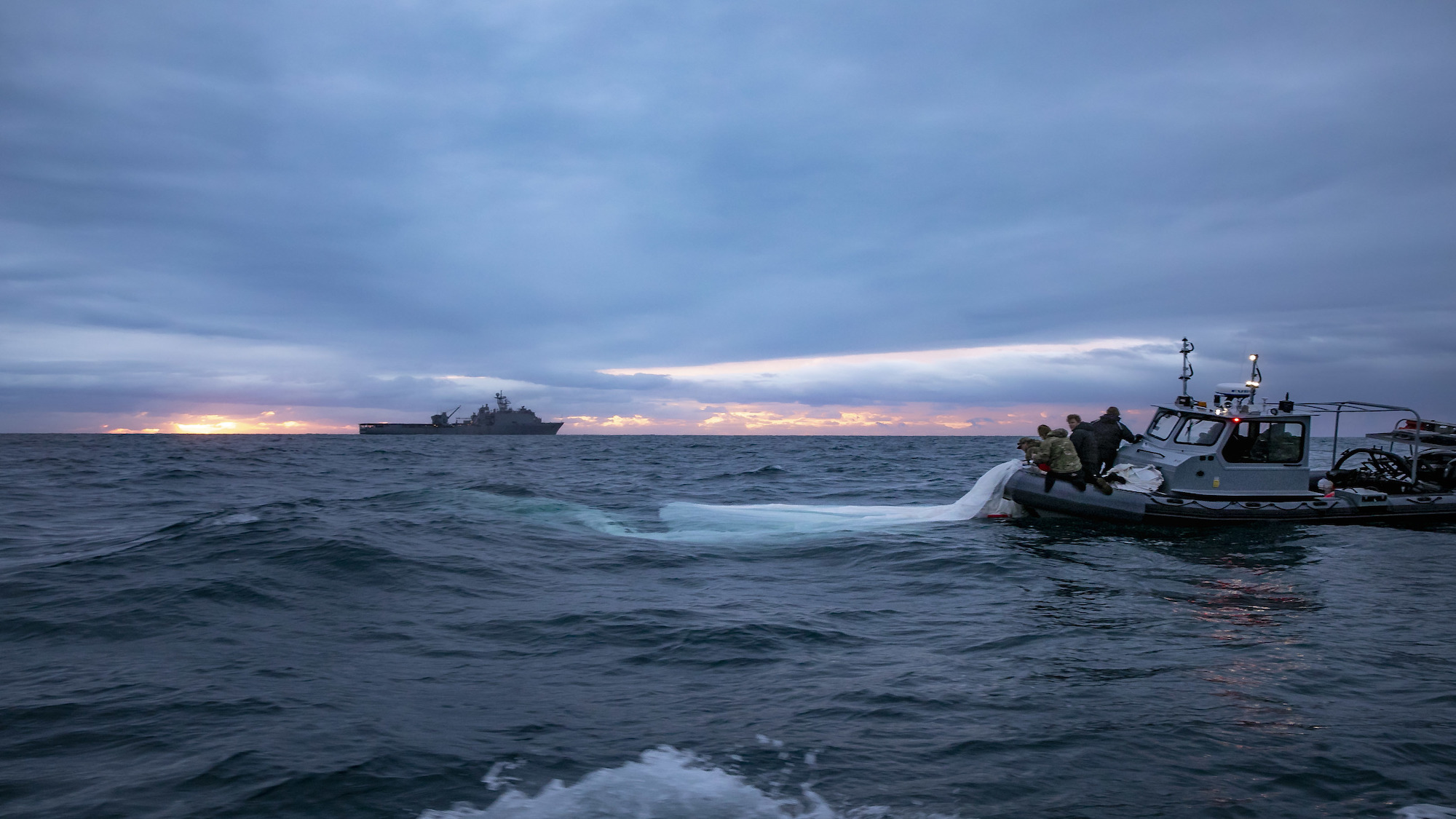

So far in February, the United States has shot down four objects in territorial skies. The first of these was a balloon, traced to the People’s Republic of China, which entered US airspace over Montana on February 1 and was shot down off the coast of South Carolina February 4. Since then, three other objects have been spotted and destroyed, including most recently an octagon-shaped flying object above Lake Huron. The new frequency of sightings, as well as the unknown uses and origins of several of the craft, have led to public confusion, and two big questions: What exactly are the objects, and why were they not detected until now?
“I know there have been questions and concerns about this, but there is no — again, no indication of aliens or extraterrestrial activity — (laughter) — with these recent takedowns,” Press Secretary Karine Jean-Pierre said in a February 13 briefing. “Again, there is no indication of aliens or [extra]terrestrial activity with these recent takedowns. Wanted to make sure that the American people knew that, all of you knew that. And it was important for us to say that from here because we’ve been hearing a lot about it.”
That the objects remain unknown but terrestrial in origin fits into the broader pattern of Unidentified Flying Objects and, more recently, Unidentified Aerial Phenomena. Pilots and sensors have certainly been observing mysterious items in flight, but the challenges of discerning what, exactly, they are seeing, is real, as sensors are only built to study known objects.
In the late 1940s, following the first Flying Saucer panic in the United States, the Department of Defense even reached out to film-and-camera maker Eastman Kodak, to try and develop a plane-mounted camera specifically for photographing unidentified objects. The program was ultimately abandoned because the task was a bad fit for the technology: it’s hard to design a new sensor around detecting objects with unknown properties. Better to use existing sensors, and try and discern the reality of observations from what is already on hand.
One way to increase coverage is by expanding the aperture of what sensors flag as worth of alert. This is, at least in part, likely related to the detection of the three other objects identified by the US and Canada and shot down over the US this month.
“Now, in light of the Chinese balloon program and this recent incursion into our airspace, the United States and Canada, through NORAD, have been more closely scrutinizing that airspace, including enhancing our radar capabilities, which — as the Commander of NORTHCOM and NORAD, General VanHerck, said last night — may at least partly explain the increase in the objects that have been detected,” said John Kirby, spokesperson for the National Security Council, at the same February 13 briefing.
Increasing sensor sensitivity means expanding the scope of what a system, like a radar, is trained to detect. The change will allow it to include other signals that it has been set to filter out as irrelevant previously. Often, there is a good reason for this. In 2015, after an activist flew a gyrocopter onto the east lawn of the US Capitol, Congress held hearings to understand why his small flying machine wasn’t detected. Toggling area radar to be sensitive enough to see a gyrocopter would also mean getting alerts from flocks of birds, or low-lying rainclouds. What radar “sees” is reflected radio signals, and making that useful means prioritizing for known threats, like jets and missiles.
NORAD, or the North American Aerospace Defense Command, is a joint undertaking by the United States and Canada to watch for potential attacks coming from over the horizon, especially from the North Pole but including skies more broadly. NORAD was started in 1958, in the early Cold War, to watch skies for Soviet bombers loaded with atomic warheads, and expanded to focus on watching for missiles and other threats.
In the popular imagination, NORAD is best known for annually tracking the imagined flight path of Santa Claus every December 24th, a long-running public relations coup that finally found a palatable way to sell ever-watchful aerial defenses to a public worried about nuclear armageddon. In October, the National Park Service nominated a former Defense Early Warning line site, or early NORAD radar station, to be a national landmark.
It was NORAD who tested the security of DC airspace after the 2015 gyrocopter incident, and it was NORAD that tracked and alerted US fighters to the aerial object off the coast of Alaska, before fighters shot it down.
“There are no active tracks today, but the professionals at NORAD will continue to do their important work,” said Kirby. The three objects detected after the first balloon were assessed by the White House to lack a “kinetic threat” to people on the ground, as it was determined to not be sending communications signals, and to lack an onboard crew.
Kirby did not rule out the possibility that the objects were surveillance tools, but noted that “They weren’t being maneuvered. It was basically — they were been being driven by the wind.”
The recent spate of shoot-downs, and expanded sensitivity of sensors, means it may be possible that more are still to come. If these are deliberately wind-born craft lofted into US skies, ones already launched before the shoot-down may still be meandering over. Given the fate of the known large balloon and the threat other wind-borne objects, it might be reasonable to expect a pause in launches, as anyone previously putting balloons up on the premise they’ll be undetected confronts the reality of a more expansive surveillance aperture for aerial objects.
